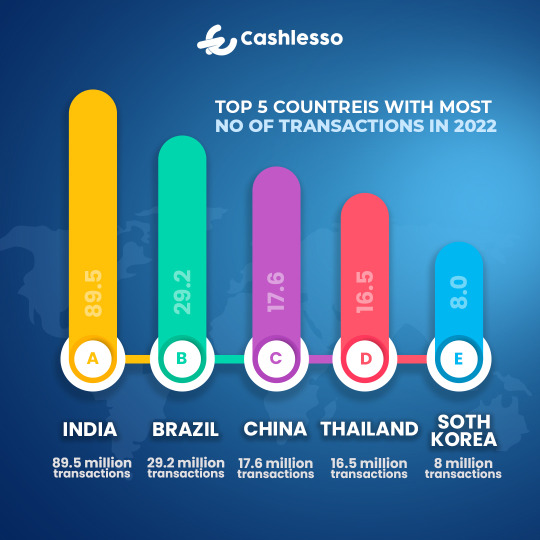#PaymentProcessor
Explore tagged Tumblr posts
Text
The Benefits of SprintOPN for Payment Processors and Service Providers 🔧💡
For payment processors and service providers, finding a flexible, reliable solution for handling digital payments is essential. SprintOPN provides:
Secure, real-time transaction processing
Scalable APIs for payment services
Compliance with Indian financial regulations
Whether you’re processing UPI, Aadhaar-based payments (AEPS), or offering payouts, SprintOPN offers a high-performance platform to handle it all. Simplify your payment systems with SprintOPN’s easy-to-integrate APIs.
0 notes
Link
#bestpaymentgateway#bestpaymentgatewayforshopify#bestpaymentgateways#dropshippingpaymentgateway#ecommercepaymentgateway#internationalpaymentgateways#onlinepaymentgateway#paymentgateway#paymentgatewayshopify#paymentgateways#paymentprocessor#shopifypaymentgateway#shopifypaymentgateways#stripepaymentgateway#toppaymentgateways#woocommercepaymentgateway#woocommercepaymentgateways
0 notes
Text
Title
Why Issuers Need to Look at Next-Gen Card Processing for Better CX? | Zeta CEO
Description
Financial institutions and issuers have been working with platforms that are built on 40-year-old technology, which causes a number of challenges. Bhavin Turakhia, CEO and Co-Founder of Zeta, highlights what these common challenges are, and why issuers need to look at Next-Gen Card Issuer Processing to move beyond these challenges.
Chapters
0:00 Bhavin’s Intro
0:13 Banking Legacy Systems
0:40 Card Issuer Pain Points
1:30 Zeta’s Next-gen Processing Stack
Key Pain Points Exposed:
Slow and Inflexible Systems: Bhavin reveals the industry average for launching new card products - a staggering 21.4 months! Legacy platforms hinder agility and innovation.
High Operational Costs: Maintaining COBOL programmers and legacy infrastructure drains resources, hindering investment in modern solutions.
Limited Personalization: Traditional systems struggle to offer hyper-personalized experiences for today's demanding cardholders.
Digital Experience Gap: Outdated technology can't support the development of sleek, modern digital experiences that customers expect.
Introducing Next-Gen Card Issuer Processing:
Bhavin unveils how Zeta's next-gen processing platform empowers U.S. issuers to overcome these limitations. Discover how you can achieve:
Faster Time to Market: Launch innovative card products in a fraction of the time compared to legacy systems.
Reduced Costs: Streamline operations and eliminate reliance on expensive legacy infrastructure.
Hyper-Personalized Experiences: Deliver tailored offerings and reward programs that resonate with your cardholders.
Modern Digital Experiences: Build cutting-edge mobile apps and digital interfaces that delight your customers.
Ready to unlock the future of card processing? Explore our blog post "Building The Cards of Tomorrow: 10 Must-Have Capabilities of Next-Gen Processing - https://www.zeta.tech/us/blog/building-the-cards-of-tomorrow-with-next-gen-processing/
Learn more about
1. Modernize Card Technology - https://www.zeta.tech/us/resources/modernize-card-tech-with-nextgen-issuer-processing/
2. Zeta's Card Issuer Processing Capabilities Recognized by Celent - https://www.zeta.tech/us/resources/nextgen-credit-card-processor-celent-report/
3. Five Ways for Faster Banking - https://www.zeta.tech/us/resources/5-ways-banks-win-with-innovation-and-speed/
4. Modern Card Issuance Platform - https://www.zeta.tech/us/resources/modern-card-issuance-platform/
#banking#nextgenprocessing#creditcard#zeta#paymentprocessor#virtualcard#bankingtechnology#financialtechnology
0 notes
Text
Why Credit Ratings Matter: Understanding the Importance of Credit Ratings

In today's financial landscape, credit ratings play a crucial role in various aspects of our personal and business lives. Whether you're applying for a loan, seeking favorable interest rates, or even renting an apartment, your credit rating can significantly impact the opportunities available to you. Understanding the importance of credit ratings is essential for managing your financial well-being effectively.
Credit ratings are assessments of an individual's or organization's creditworthiness. They reflect the likelihood of the borrower repaying their debts based on their credit history, financial stability, and repayment patterns. Here's why credit ratings matter:
Access to Credit: Lenders, such as banks and financial institutions, rely on credit ratings to evaluate the risk associated with lending money. A good credit rating can help you secure loans, credit cards, and mortgages with favorable terms and interest rates. It gives lenders confidence in your ability to repay borrowed funds responsibly.
Cost of Borrowing: Credit ratings directly impact the cost of borrowing. A higher credit rating indicates lower credit risk, resulting in better interest rates and loan terms. On the other hand, a lower credit rating can lead to higher interest rates or even loan denials. Maintaining a good credit rating can save you money in the long run by reducing the cost of borrowing.
Rental Applications: Landlords and property managers often check credit ratings when assessing rental applications. A positive credit rating demonstrates financial responsibility and reliability, increasing your chances of being approved for a rental property. It also provides leverage in negotiating lease terms and security deposits.
Employment and Business Opportunities: Some employers and companies review credit ratings as part of their hiring or business partner selection process. While credit ratings alone may not determine eligibility, they can be a factor in assessing an individual's financial stability and responsibility. A good credit rating can enhance your professional reputation and open doors to certain job positions or business opportunities.
Insurance Premiums: In certain cases, credit ratings may influence insurance premiums. Insurance providers may consider credit ratings as an indicator of risk, potentially impacting the cost of auto insurance, homeowner's insurance, or other types of coverage. Maintaining a good credit rating can help keep insurance costs lower.
Future Financial Goals: Building and maintaining a good credit rating is essential for achieving future financial goals. Whether you plan to buy a home, start a business, or invest in real estate, a strong credit rating provides you with the financial foundation and credibility needed to pursue these endeavors.
To improve or maintain a good credit rating, it's important to practice responsible financial habits. This includes paying bills on time, keeping credit card balances low, minimizing debt, and regularly reviewing your credit reports for accuracy.
In conclusion, credit ratings are critical for accessing credit, obtaining favorable terms and interest rates, and making significant financial decisions. Understanding the importance of credit ratings empowers you to take control of your financial health and work towards achieving your long-term goals.
0 notes
Text
https://sabpaisa.in/blog/what-is-payment-processing/
Unlocking the Essence of Online Payment Processing: A Comprehensive Exploration. Dive deep into the core of e-commerce transactions and discover the intricacies of online payment processing. This enlightening blog serves as your gateway to understanding the journey of a payment from initiation to completion. Learn about the vital role of payment gateways, encryption protocols, and fraud detection mechanisms in ensuring secure transactions. Explore the various stages involved in processing online payments and gain insights into emerging trends and technologies shaping the digital payment landscape. Whether you're a business owner or a curious consumer, this blog unveils the inner workings of online payment processing, empowering you with knowledge and confidence.
0 notes
Text
💰 How Subscription Payments Can Boost Your Revenue 🚀

If you're still relying on one-time sales, it's time for a business upgrade! Subscription payments are the key to long-term success, ensuring a steady cash flow, loyal customers, and effortless scalability.
🔥 Why Subscription Payments Work?
✔ Predictable Revenue – No more ups and downs in cash flow! ✔ Higher Customer Retention – Keep customers coming back. ✔ Automated Billing – Say goodbye to manual payment collection. ✔ Scalability – Grow your business faster with recurring income.
💡 How to Make Subscription Payments Work for You?
To enable recurring payments, you need a trusted payment gateway provider. That’s where Indiplex Payment Solutions comes in!
✅ Automated Subscription Billing – Get paid without hassle. ✅ Multiple Payment Options – UPI, cards, net banking, and wallets. ✅ Secure Transactions – Say hello to fraud-free payments. ✅ Instant Settlements – Keep your cash flow healthy.
🔮 Subscription-based business models are the future. Whether you run a SaaS company, e-commerce store, or digital service, offering subscription payments can transform your revenue game!
💬 **Would you switch to a subscription model? Let’s discuss in the comments!**👇
#SubscriptionPayments #RecurringRevenue #PaymentGateways #Indiplex #BusinessGrowth #Fintech #BillingAutomation #SaaS #PaymentProcessors
0 notes
Text
Abstraction in design patterns

Abstraction in design patterns is a fundamental concept that focuses on hiding complex implementation details and exposing only essential information or functionalities. It allows you to work with objects or systems at a higher level of understanding, without needing to know how they work internally. Think of it like driving a car: you know how to steer, accelerate, and brake, but you don't need to understand the intricate workings of the engine, transmission, or other internal components to drive effectively.
Here's a breakdown of what abstraction means in the context of design patterns:
Simplification: Abstraction simplifies complex systems by breaking them down into manageable, understandable units. It reduces cognitive overload by focusing on what an object does, not how it does it.
Generalization: Abstraction allows you to treat different objects in a uniform way, as long as they share a common interface or abstract class. This promotes code reusability and flexibility. For example, you might have different types of payment processors (credit card, PayPal, etc.), but you can interact with them through a common "PaymentProcessor" interface.
Information Hiding: Abstraction hides the internal state and implementation details of an object from the outside world. This protects the integrity of the object and prevents external code from becoming dependent on specific implementation details, which could make the system brittle and difficult to change.
Creating a Contract: An abstract class or interface defines a contract that concrete classes must adhere to. This ensures consistency and predictability in how objects interact. Anyone using an object that implements a specific interface knows what methods to expect and how they will behave.
Enabling Polymorphism: Abstraction is crucial for polymorphism, which allows objects of different classes to be treated as objects of a common type. This is a powerful concept that enables flexible and extensible designs.
How Abstraction is Used in Design Patterns:
Many design patterns rely heavily on abstraction. Here are a few examples:
Factory Pattern: The Factory pattern abstracts the process of object creation. Instead of directly instantiating concrete classes, you ask a factory to create the objects for you. This decouples the client code from the specific classes being created.
Strategy Pattern: The Strategy pattern allows you to choose an algorithm at runtime. The different algorithms are abstracted behind a common interface, so the client code can switch between them without needing to know the specific implementation of each algorithm.
Facade Pattern: The Facade pattern provides a simplified interface to a complex subsystem. It hides the complexity of the subsystem behind a single, easy-to-use object.
Observer Pattern: The Observer pattern allows objects to be notified of changes in the state of another object. The details of how the notification is implemented are abstracted away, so the observer doesn't need to know how the subject manages its state.
In summary: Abstraction in design patterns is about creating simplified views of complex systems, hiding implementation details, and focusing on essential functionalities. It's a powerful tool for building flexible, maintainable, and reusable code.
1 note
·
View note
Text
Best Practices for Writing Clean and Efficient Java Code
Best Practices for Writing Clean and Efficient Java Code
Writing clean and efficient Java code improves readability, maintainability, and performance. Here are some best practices to follow:
1. Follow Naming Conventions
Using meaningful names improves code readability.
✅ Use camelCase for variables and methods:javaint maxCount; String userName; void calculateTotalPrice() { }
✅ Use PascalCase for classes and interfaces:javaclass UserAccount { } interface PaymentProcessor { }
✅ Use UPPER_CASE for constants:javafinal int MAX_LIMIT = 100;
2. Write Readable and Maintainable Code
Keep methods short and focused (preferably ≤ 20 lines).
Use proper indentation (4 spaces per level).
Follow Single Responsibility Principle (SRP): Each method/class should do one thing.
🔴 Bad Example:javavoid processUser(String name, String email) { System.out.println("Processing: " + name); if (email.contains("@")) { System.out.println("Valid email"); } }
✅ Good Example:javavoid validateEmail(String email) { if (!email.contains("@")) { throw new IllegalArgumentException("Invalid email"); } }void processUser(String name, String email) { System.out.println("Processing: " + name); validateEmail(email); }
3. Use final Where Possible
Mark variables and methods as final if they shouldn’t change.
✅ Use final for constants and method parameters:javafinal int MAX_USERS = 100; // Prevents reassignment void process(final String data) { } // Prevents modification
✅ Use final for immutable classes:javafinal class ImmutableClass { } // Cannot be subclassed
4. Use Proper Exception Handling
Handle exceptions gracefully and avoid empty catch blocks.
🔴 Bad Example:javatry { int result = 10 / 0; } catch (Exception e) { } // Swallowing the exception
✅ Good Example:javatry { int result = 10 / 0; } catch (ArithmeticException e) { System.out.println("Cannot divide by zero: " + e.getMessage()); }
5. Avoid Creating Unnecessary Objects
Creating redundant objects wastes memory and CPU cycles.
🔴 Bad Example:javaString text = new String("Hello"); // Unnecessary object creation
✅ Good Example:javaString text = "Hello"; // Uses string pool, avoiding extra object creation
6. Use Streams and Lambda Expressions
Java 8+ features like Streams and Lambdas make code cleaner.
✅ Using Streams for filtering and mapping:javaList<String> names = List.of("Alice", "Bob", "Charlie"); List<String> filteredNames = names.stream() .filter(name -> name.startsWith("A")) .map(String::toUpperCase) .collect(Collectors.toList());
✅ Using Lambdas for concise code:java// Traditional way Comparator<Integer> comparator = new Comparator<Integer>() { @Override public int compare(Integer a, Integer b) { return a - b; } };// Using Lambda Comparator<Integer> comparatorLambda = (a, b) -> a - b;
7. Use StringBuilder for String Manipulation
Using String for concatenation creates multiple immutable objects, wasting memory.
🔴 Bad Example:javaString result = ""; for (int i = 0; i < 1000; i++) { result += i; // Creates new String object every iteration }
✅ Good Example (Use StringBuilder)javaCopyEditStringBuilder result = new StringBuilder(); for (int i = 0; i < 1000; i++) { result.append(i); // Efficient, modifies same object }
8. Use Optional Instead of Null Checks
Java’s Optional helps avoid NullPointerException.
🔴 Bad Example:javaif (user != null && user.getEmail() != null) { System.out.println(user.getEmail()); }
✅ Good Example (Using Optional)javaCopyEditOptional.ofNullable(user) .map(User::getEmail) .ifPresent(System.out::println);
9. Use Proper Data Structures
Choosing the right data structure improves performance.
Use CaseBest Data StructureFast lookupsHashMap, HashSetSorted dataTreeMap, TreeSetFIFO (queue operations)LinkedList, ArrayDequeFast access by indexArrayList
🔴 Bad Example (Using ArrayList for Frequent Insertions/Deletions at Start)javaList<Integer> list = new ArrayList<>(); list.add(0, 100); // Inefficient, shifts elements
✅ Good Example (Use LinkedList for Fast Insertions/Deletions)javaList<Integer> list = new LinkedList<>(); list.addFirst(100); // Efficient
10. Optimize Loops and Avoid Nested Loops
Too many nested loops degrade performance.
🔴 Bad Example (Nested Loops Cause O(n²) Complexity)javafor (int i = 0; i < list1.size(); i++) { for (int j = 0; j < list2.size(); j++) { if (list1.get(i).equals(list2.get(j))) { System.out.println("Match found"); } } }
✅ Good Example (Use Set for O(1) Lookup Time)javaSet<String> set = new HashSet<>(list2); for (String item : list1) { if (set.contains(item)) { System.out.println("Match found"); } }
11. Use Efficient Database Access (JDBC, Hibernate)
🔴 Bad Example (Repeated Queries in a Loop, Slow Performance)javafor (User user : users) { ResultSet rs = statement.executeQuery("SELECT * FROM users WHERE id = " + user.getId()); }
✅ Good Example (Batch Processing for Efficiency)javaPreparedStatement ps = connection.prepareStatement("SELECT * FROM users WHERE id = ?"); for (User user : users) { ps.setInt(1, user.getId()); ResultSet rs = ps.executeQuery(); }
12. Use Caching to Improve Performance
Caching reduces redundant computations and database hits.
✅ Use ConcurrentHashMap for in-memory caching:javaMap<Integer, User> userCache = new ConcurrentHashMap<>();
✅ Use frameworks like Redis for distributed caching:java@Autowired private RedisTemplate<String, User> redisTemplate;
Conclusion
✅ Follow naming conventions for clarity. ✅ Keep methods and classes small for maintainability. ✅ Use final, Optional, and StringBuilder where needed. ✅ Optimize loops, use Streams, and choose the right data structures. ✅ Use parallel processing and caching for better performance.
By applying these best practices, you can write clean, efficient, and high-performance Java code. 🚀
WEBSITE: https://www.ficusoft.in/core-java-training-in-chennai/
0 notes
Text
Choosing the right payment processor is crucial for seamless transactions. Consider factors like security, cost, and scalability to find the best fit for your business needs. #PaymentProcessor #MerchantServices #OnlinePayments
1 note
·
View note
Video
youtube
Choosing the Right Credit and Debit Card Payment Processor
In a business world driven by seamless transactions, your choice of a credit and debit card payment processor holds immense power. Join us in this video as we delve into the realm of empowered business operations. Whether you're navigating the dynamic e-commerce landscape, venturing into high-risk sectors like CBD, or engaging in credit repair services, we've got you covered. Learn how the right payment processor can revolutionize your growth, build trust, and ensure customer satisfaction. From e-commerce gateways to high-risk merchant processing and specialized credit repair solutions, we explore the critical factors to consider when choosing your ideal payment partner.
📣 Unravel the Future of High-Risk Payment Solutions with TouchSuite®! 🎯💼📈
🔍 Seeking advanced payment processing for high-risk businesses? Dive into the vast range of services we offer in this video: from high-risk payment processing, merchant accounts, and e-commerce gateway solutions, to specialized services for credit repair and CBD industries.
🌐✉️📞 With a legacy of excellence and serving thousands of global businesses, TouchSuite® is your trusted high-risk payment solutions provider.
#CreditCardPaymentProcessing #CreditCardMerchantProcessing #PaymentProcessor #HighRiskPaymentProcessing #AcceptCreditCards #MerchantProcessing #CreditCardPaymentGateway #HighRiskMerchantAccount
0 notes
Text

"India's digital revolution reached new heights in 2022, with an unprecedented surge in digital transactions, transforming the nation's financial landscape.
.
.
.
#digital #payments #banking #banks #fintech #digitaltransaction #paymentgateway #paymentprocessor #2dpaymentgateway #3dpaymentgateway #cashlesso
0 notes
Text
Payment Gateway vs Payment Processor

Know the brief about Payment Gateway vs Payment Processor to clarify your doubts and help you adapt to the most suitable payment methods to increase the convenience and security of your digital payment structure. Read More: https://www.metizsoft.com/blog/payment-gateway-vs-payment-processor
#paymentgateway#paymentprocessor#security#paymentprocessing#payments#creditcards#onlinepayments#digitalpayment#digitalpayments#technology
0 notes
Text

You will receive invaluable assistance to open a forex merchant account from PAYSTUDIO's first-rate customer support.
Visit: https://paystudio.vip/ Email: [email protected] / Call: (+44) 0 (800) 887 0291
#highriskmerchantaccount#cryptocurrencytrading#paymentsolution#paymentprocessing#paymentprocessor#ecommerce#creditcard#mobilepayments#retail#creditcards#paymentprocessingsolutions#paymentprocessingsolution#highriskpaymentprocessing#business#fintech#payment#payments#onlinepayment#paymentgateway#creditcardprocessing#merchantservices#onlinepayments#paymentservices#paymentsystems#paymentsecurity#paymentsystem#weekends#merchantprocessing#digitalpayments#weekend
0 notes
Text
How Card transaction works?
Payment cards are rectangular plastic piece which has some sensitive numbers on them. These cards will be directly linked to our bank account. By using this card we can easily transact the amount online, without even going to the bank and withdrawing the money. These cards were used in different places like Point of Sale (PoS), online, and ATMs. In this article, we will look at the card transaction process taking place in PoS machines and online.
#paymenttrends#finance#shopping#pointofsale#paymentgateway#paymentprocessor#Banks#visa#mastercard#edtech#technology#education
0 notes
Text
Our Next-Gen Online Payment Gateway for Secure Transactions

Welcome to the cutting-edge online payment gateway that revolutionizes the way you make and receive payments. With our advanced y, we bring you a seamless and secure payment experience like never before.
We understand the importance of simplicity and convenience in online transactions. Our user-friendly interface and intuitive design make it effortless for you to process payments, whether you're a business owner or an individual shopper. Say goodbye to lengthy forms and complicated steps – streamlines the process, allowing you to complete transactions in a few clicks.
Security is our utmost priority. With robust encryption and advanced fraud detection measures, you can trust to safeguard your sensitive information. Our secure servers ensure that your payment details remain confidential, providing you with peace of mind during every transaction.
But is not just about convenience and security – we also offer a wide range of features to enhance your online shopping experience. From seamless integration with popular e-commerce platforms to support for multiple payment methods, including credit cards and digital wallets, we have you covered.
Interactive interface that adapts to your needs. Experience real-time updates, personalized recommendations, and responsive design across multiple devices, ensuring a consistent and engaging payment experience every time.
Don't let outdated payment gateways slow you down and unlock a new level of efficiency and convenience in online transactions. Join thousands of satisfied customers who have chosen as their preferred online payment gateway. Sign up today and elevate your payment experience with – the future of online payments.
0 notes
Text
PayStudio has redefined the system of white label payment processing solutions.
Our team is always ready to assist you.
Contact us at: (+44) 0 (800) 887 0291 [email protected] https://paystudio.vip/
#highriskmerchantaccount#cryptocurrencytrading#paymentsolution#paymentprocessing#paymentprocessor#ecommerce#creditcard#mobilepayments#retail#creditcards#paymentprocessingsolutions#paymentprocessingsolution#highriskpaymentprocessing#business#fintech#payment#payments#onlinepayment#paymentgateway#creditcardprocessing#merchantservices#onlinepayments
0 notes